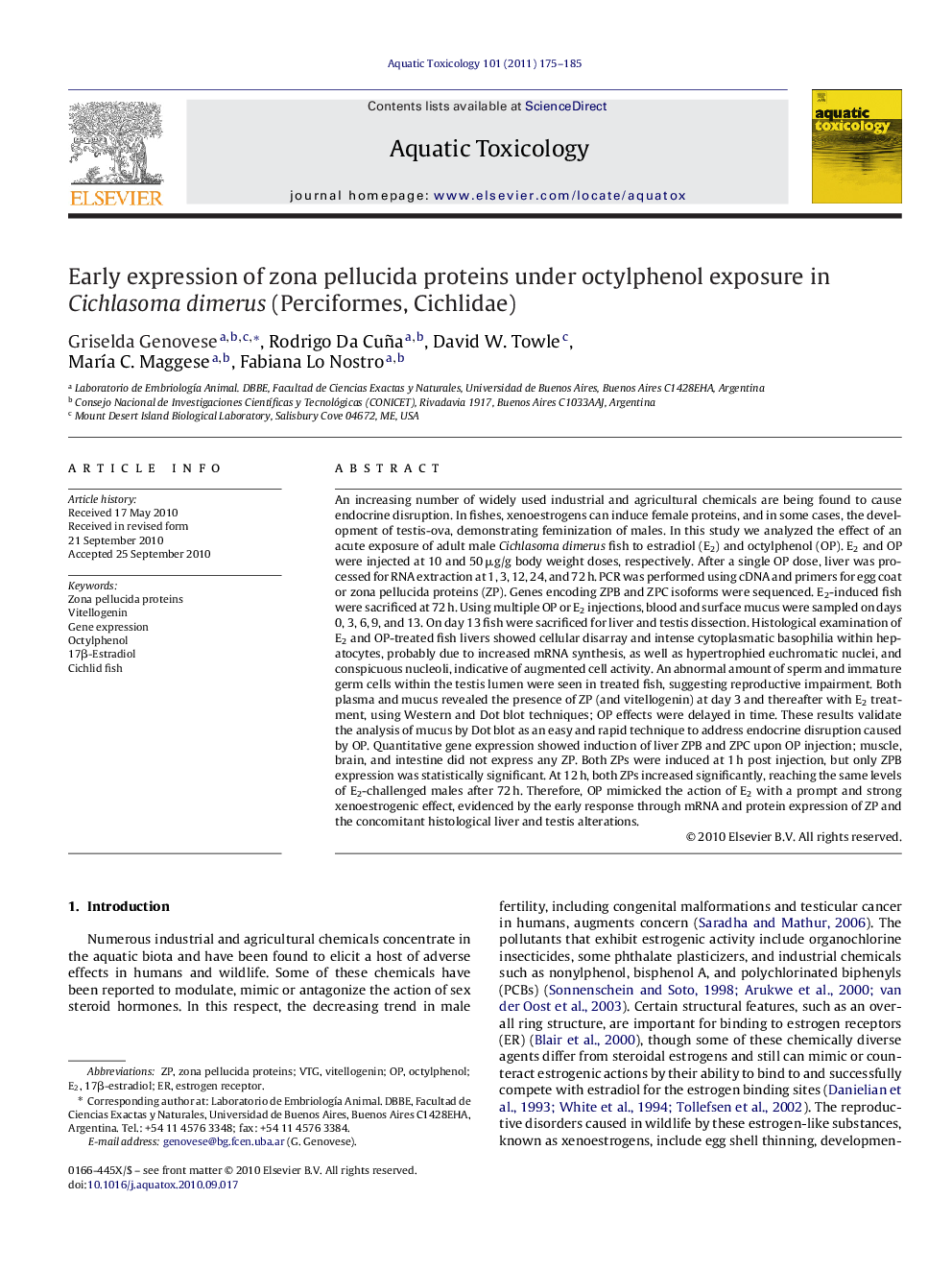| کد مقاله | کد نشریه | سال انتشار | مقاله انگلیسی | نسخه تمام متن |
|---|---|---|---|---|
| 4530105 | 1324682 | 2011 | 11 صفحه PDF | دانلود رایگان |

An increasing number of widely used industrial and agricultural chemicals are being found to cause endocrine disruption. In fishes, xenoestrogens can induce female proteins, and in some cases, the development of testis-ova, demonstrating feminization of males. In this study we analyzed the effect of an acute exposure of adult male Cichlasoma dimerus fish to estradiol (E2) and octylphenol (OP). E2 and OP were injected at 10 and 50 μg/g body weight doses, respectively. After a single OP dose, liver was processed for RNA extraction at 1, 3, 12, 24, and 72 h. PCR was performed using cDNA and primers for egg coat or zona pellucida proteins (ZP). Genes encoding ZPB and ZPC isoforms were sequenced. E2-induced fish were sacrificed at 72 h. Using multiple OP or E2 injections, blood and surface mucus were sampled on days 0, 3, 6, 9, and 13. On day 13 fish were sacrificed for liver and testis dissection. Histological examination of E2 and OP-treated fish livers showed cellular disarray and intense cytoplasmatic basophilia within hepatocytes, probably due to increased mRNA synthesis, as well as hypertrophied euchromatic nuclei, and conspicuous nucleoli, indicative of augmented cell activity. An abnormal amount of sperm and immature germ cells within the testis lumen were seen in treated fish, suggesting reproductive impairment. Both plasma and mucus revealed the presence of ZP (and vitellogenin) at day 3 and thereafter with E2 treatment, using Western and Dot blot techniques; OP effects were delayed in time. These results validate the analysis of mucus by Dot blot as an easy and rapid technique to address endocrine disruption caused by OP. Quantitative gene expression showed induction of liver ZPB and ZPC upon OP injection; muscle, brain, and intestine did not express any ZP. Both ZPs were induced at 1 h post injection, but only ZPB expression was statistically significant. At 12 h, both ZPs increased significantly, reaching the same levels of E2-challenged males after 72 h. Therefore, OP mimicked the action of E2 with a prompt and strong xenoestrogenic effect, evidenced by the early response through mRNA and protein expression of ZP and the concomitant histological liver and testis alterations.
Journal: Aquatic Toxicology - Volume 101, Issue 1, 17 January 2011, Pages 175–185